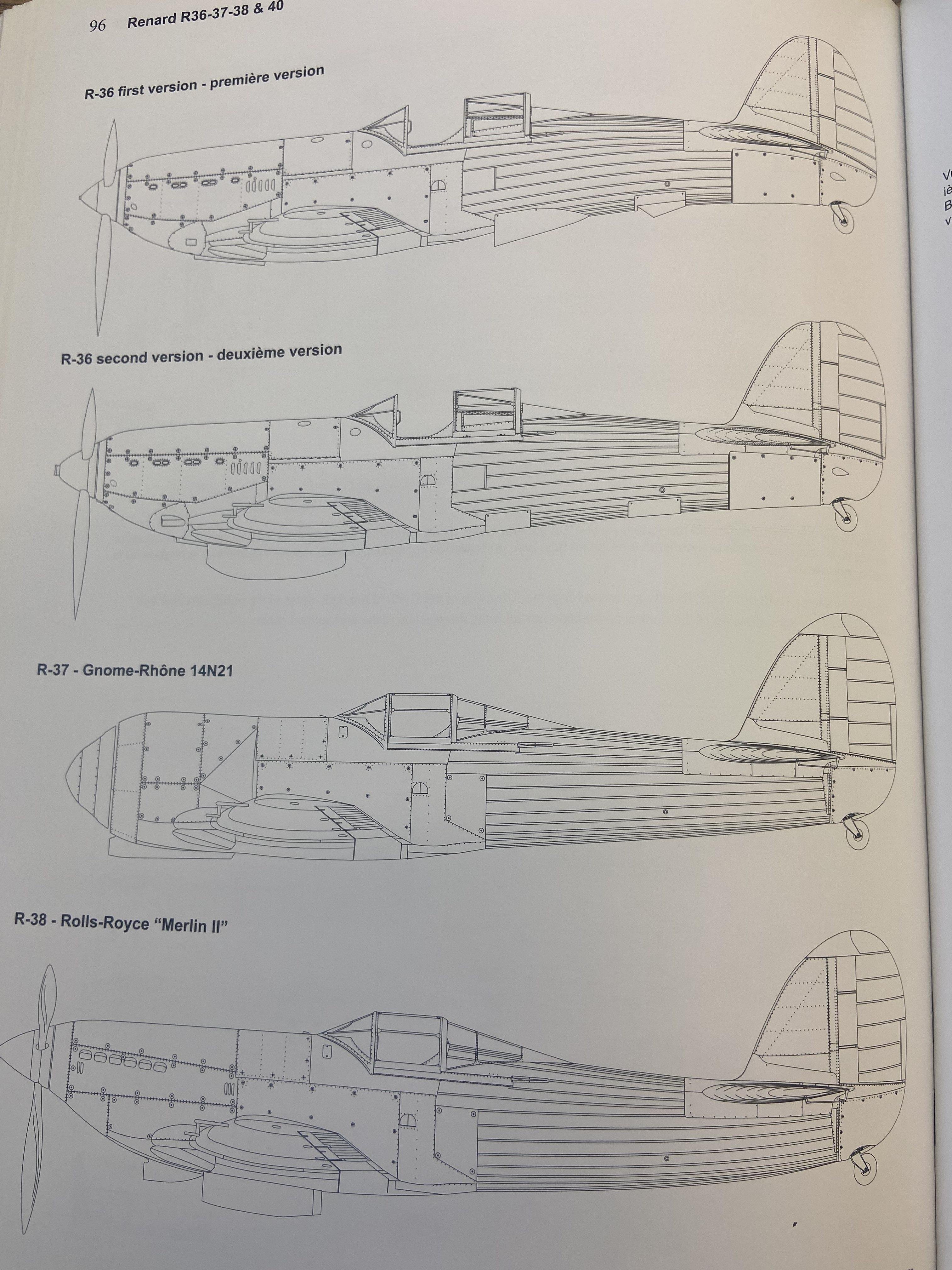- Yes
- No
The Renard R.36 was a Belgian fighter designed to give Belgium a modern fighter aircraft, it was an extremely promising design, surpassing French fighters of the time and being on par with the likes of the Spitfire. It was built in early 1937 and made its first flight on November 5 1937.
While being an all-metal fighter, except the aft fuselage which was fabric-covered, its simplicity and low cost made it a very light airframe, perfect for dogfights and maneuvers, although it was also probably vulnerable to enemy fire and not very survivable, the fuel tanks were also not self-sealing.
Here are comments about the flight characteristics of the R.36 by test pilot Caryn that could help with the flight model in-game:
- The cockpit isn’t ventilated well enough
- Taxiing on the ground is very easy
- During takeoff, the plane rolls for longer compared to the aircraft used by the air force at the time before the tail lifts off, but you can then firmly pull on the stick and the plane climbs very quickly, takeoffs on full load are easy.
- While climbing, because of the engine torque, the plane tends to turn right. The left foot effort isn’t tiring.
- Excellent visibility in all directions.
- The plane flies very well, it is stable, balanced and the controls are on point.
- Pleasant to fly in a glide, descent is at 150 km/h
- When the gear and flaps are down, controlling the plane is still very easy at 150 to 160 km/h, you can make sharp turns and even glides with no danger.
- Landings are easy and not dangerous, braking offers no risk of nose-over.
- During a flight on 22 June 1938 and during a loop, the plane went into a spin on its back at the top of the loop, and the pilot had no difficulty getting out of the spin.
- When losing speed at 125 km/h, the nose dives a bit before naturally recovering, and the plane has no tendency to stall.
Its performance, ruggedness, cheapness and national origin prompted the air force to place and order of 40 aircraft for the first few months of 1939 to replace the badly outdated Fairey Firefly IIMs from 1931.
Unfortunately, in January 1939 and after 75 hours of flight, disaster struck, and the R.36 crashed. According to most accounts, the R.36 was flying at low speed and sharply turned left before losing speed and slipping and slightly yawing left towards the ground. It then dived straight down until it seemed to level out at about 400 m altitude for 100 more meters when it suddenly rolled right and plunged into the ground on its back.
Even though the weather wasn’t ideal and the plane was flying lower than it should - 700 m instead of 1500 in order to make a demonstration for the air force general staff - even though the flight reports until then had been excellent and the R.36 was supposedly easy to recover in a spin, test pilot Caryn going as far as saying it was easier to fly than the Fairey Firefly biplanes, the Belgian government still cancelled the order, which was viewed in Belgium as a terrible decision since it was an inferior and foreign design.
Unbeknownst to many, there were two versions of the R.36, simply named first and second version.
As for the differences, the air intake is bigger on the second version and also in the front of the fuselage instead of behind the cockpit. From the first to second version, the Ratier propeller was replaced by a Hamilton Standard propeller “constant speed”, the glycol in the cooling system was replaced by water and the rudder was enlarged, and the weight was increased by 70kg.
Renard R.36-1 with the smaller intake and rudder as well as the difference between some Renard fighters:
So now that the differences are cleared up, we can now move on to the specs of the R.36-1
Engine: Hispano-Suiza 12Ycrs (910 hp)
Wingspan: 11.64 m
Length: 8.54 m
Height: 2.9 m
Wing area: 20 m²
Empty weight: 1700 kg
Loaded weight: 2400 kg
Wing loading: 120 kg/m² - Est. Turn time: 15 s
Max speed: 505 km/h at 4000 m
Armament: 4 × 7.7 mm FN-Browning machine guns (ammo: 1400) and 1 × 20 mm HS 404 cannon (ammo: 60)
Payload: 8 × 10 kg bombs + 1 grenade launcher with 30 grenades (yes, grenades)
Climb rate: 13.5 m/s
Service ceiling: 12000 m
Range: 1000 km
So the conclusion here is the same as with most Belgian fighters of the time - while its armament is very similar to its french counterparts, don’t be fooled! It is considerably more maneuverable than any D.520 or M.S.406!
With a wing loading of 120 kg/m², its maneuverability should be comparable to that of the Spitfire or Hurricane, and the pilots were quite impressed with how nimble this machine was.
However, as with a lot of purebred dogfighters, there is no armor on the plane nor are the fuel tanks self-sealing - so use your turning abilities as soon as you can!
The machine guns, while only being rifle-caliber, are somewhat better than their French or British counterparts, basically being modified American .30 cals rechambered in 7.7 mm and having a rate of fire of 1350 rpm, as well as good incendiary rounds.
About the differences between the R.36-1 and R.36-2:
Some sources and graphs:
Renard R-36/37/38 & 40, Nicolas Godfurnon




